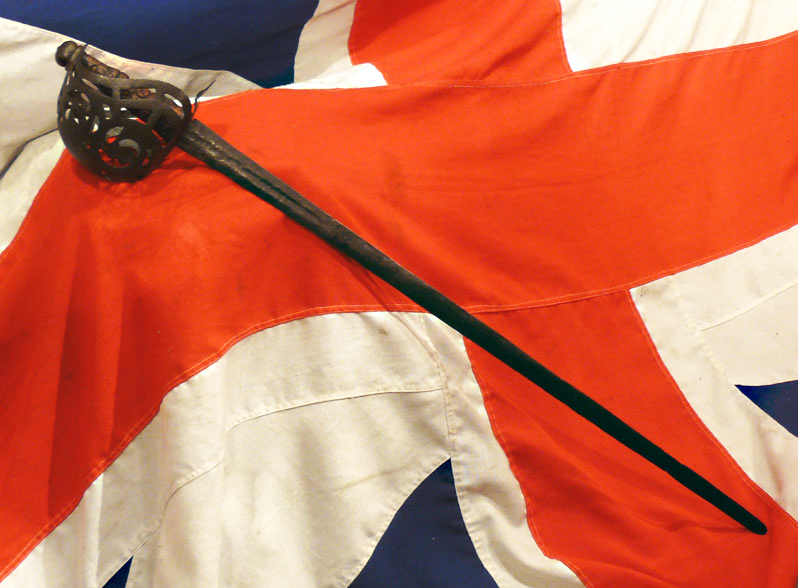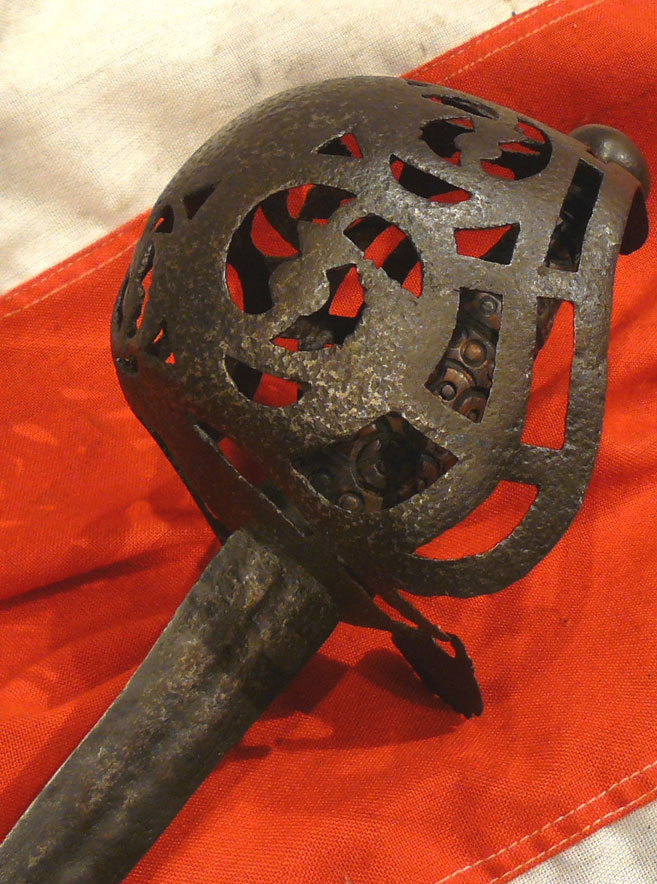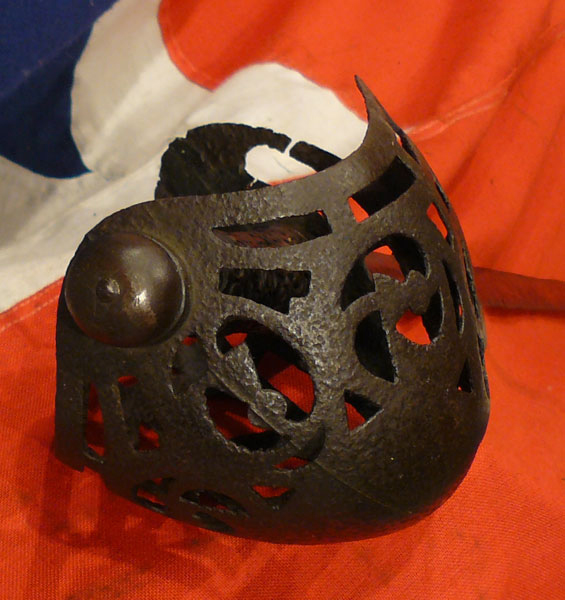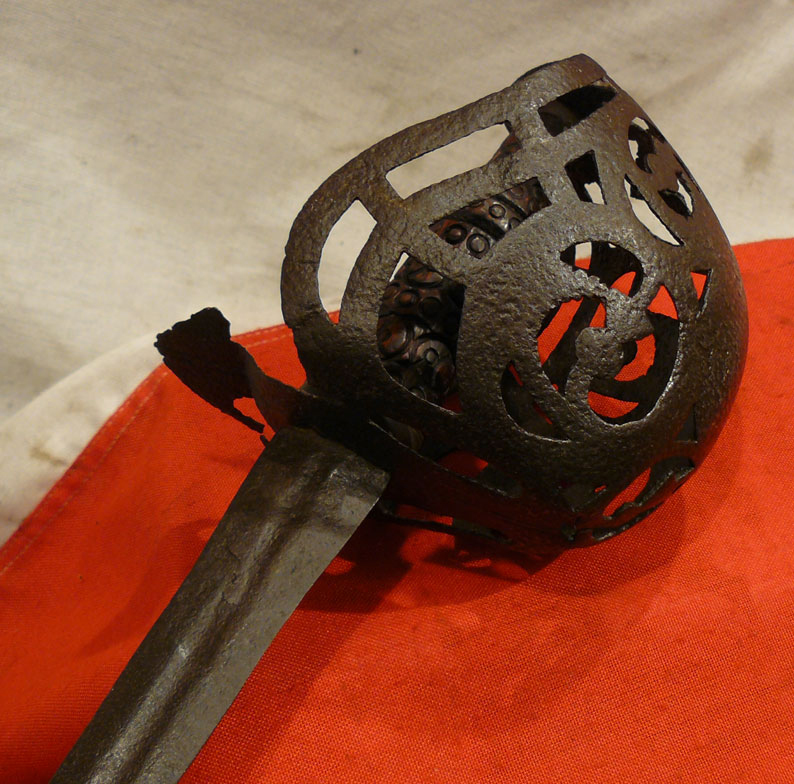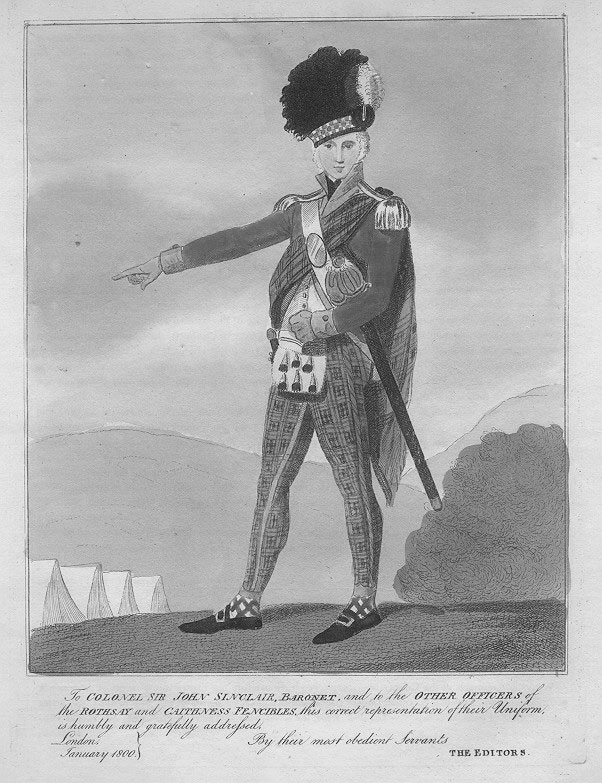Original 18th Century Scottish Fencible Regimental Basket Hilted Broadsword
With distinctive two part centrally welded basket, in sheet iron, with scrolls and thistles there over. Interesting original regimental swords of the 18th century, from Scottish regiments are very much sought after throughout the entire world. Scottish Fencible Regiment's swords are now jolly rare indeed, and they are highly distinctive in their most unique form. Fancy carved replacement grip. Some ironwork separation on the basket by the forte of the blade, but overall in good sound condition. Overall natural age surface pitting. Made for the war with Revolutionary France in the 1790's. The total number of British fencible infantry regiments raised during the Seven Years' War and the American War of Independence was nine, of which six were Scottish, two were English and one was Manx. The regiments were raised during a time of great turbulence in Europe when there was a real fear that the French would either invade Great Britain or Ireland, or that radicals within Britain and Ireland would rebel against the established order. There was little to do in Britain other than garrison duties and some police actions, but in Ireland there was a French supported insurrection in 1798 and British fencible regiments were engaged in some pitched battles. Some regiments served outside Great Britain and Ireland. Several regiments performed garrison duties on the Channel Islands and Gibraltar. A detachment of the Dumbarton Fencibles Regiment escorted prisoners to Prussia, and the Ancient Irish Fencibles were sent to Egypt where they took part in the operations against the French in 1801.
When it became clear that the rebellion in Ireland had been defeated and that there would be peace between France and Britain in 1802 (The preliminaries of peace were signed in London on 1 October 1801) the Fencible regiments were disbanded.
The British cavalry and light dragoon regiments were raised to serve in any part of Great Britain and consisted of a force of between 14,000 and 15,000 men. Along with the two Irish regiments, those British regiments that volunteered for service in Ireland served there. Each regiment consisted of eighteen commissioned officers and troops of eighty privates per troop. The regiments were always fully manned as their terms of service were considered favourable. At the beginning of 1800 all of the regiments were disbanded
Code: 20632
2750.00 GBP

